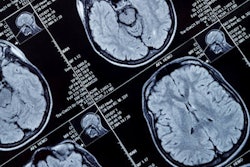
TORONTO - Whole-body MRI scans reveal significant differences in how fat is stored in men and women, according to research presented at the International Society for Magnetic Resonance in Medicine (ISMRM) meeting.
Yulong Qi, MD, of Peking University Shenzhen Hospital in China on June 2 shared results of a study that derived fat measurements in patients using whole-body transverse MR proton density fat fraction (PDFF) imaging. In a comparison of the technique with body mass index (BMI) and waist-to-hip ratio (WHR) measurements in patients, MR findings provided significantly more diagnostic information.
"Different from the anthropometric indexes, the distribution characteristics of body fat show great differences between sexes," Qi said, in a poster presentation session.
China has an estimated 90 million obese individuals, recently surpassing the U.S. as the country with the largest number of these people, Qi noted. This population is at major risk of related health problems, with BMI the most widely used tool for assessing the degree of obesity. However, many studies have found that BMI lacks specificity and provides poor disease risk assessment, he added.
With an eye on developing new techniques, Qi and colleagues used a 3-tesla MR scanner to acquire PDFF images in 37 volunteers between the ages of 22 and 37. Participants were scanned from neck to knee, with about 160 PDFF images obtained for each volunteer. The researchers took three measurements: total adipose tissue, subcutaneous adipose tissue, and internal adipose tissue.
A correlational analysis revealed that among these fat distribution characteristics, BMI was only associated with total adipose tissue and had almost no relationship with subcutaneous adipose tissue and internal adipose tissue, Qi said. In addition, while waist-to-hip ratio is considered to be better than BMI in reflecting disease risk due to obesity, this study found that waist-to-hip ratio had a significant correlation with total adipose tissue only in the male group.
"These results all show that the fat hoarding pattern shows a large difference between women and men, and this difference is difficult to reflect in BMI," Qi said.
In the fat distribution characteristics based on MR whole-body imaging, only a proportion of whole-body fat volume showed moderate correlation with traditional ergonomic indexes, while other indexes had low correlations, Qi said.



















